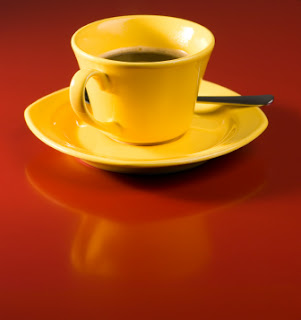Here are some activities for you to try at home as you study fossils!
1. Make a cast of a footprint.
Find a really nice paw print of a dog, of a cat, or of some other animal. Clear away the leaves and debris from the outer edges of the print. Take a 1-inch wide strip of card stock (an index card works well) about 11-inches long (longer if necessary) and staple it into a circle. Place the card circle so that it surrounds the print like a fence. Dig it into the dirt a little so that it is secure. Pour plaster which is the consistency of toothpaste into the print and the fence. Let set and remove. You should have a cast of the print. If you do not have a good footprint, make one using your dog, a little dirt, and some water. Make mud and press your dog’s paw into it. Allow the print to dry until it is hard enough to keep it’s shape when touched. Then make the cast as before.
2. Making a plaster copy of a footprint.
After your cast of the animal footprint has become firm, put a thin layer of petroleum jelly all around the inside of the cast. Put another card stock sleeve around the casting to make a cuplike form. Pour plaster of paris at a toothpaste consistency into the cup. Allow to set. Remove the card stock and separate the layers. You should now have a plaster copy of the foot print. You can do this with your little sister’s hand print, too.
3. Dissolving the bone / the first step of replacement.
When a future fossil is replaced by minerals it is done very slowly, a particle at a time so that the structure of the original organism is still preserved by the replacing minerals. Sometimes even the cells of the plant are able to be seen even though the original cells are long gone. This is how the trees were petrified in the Petrified Forest. The water first dissolves the material of the organism, then replaces it with another particle, a mineral. Some fossils are replaced with beautiful agates and are turned into wonderful specimen you can use as decorations at home.
You can not try replacement, but you can experiment with the first part of the process, the removal of the material of a bone. Place a chicken bone in a glass of vinegar or of carbonated water. Each of these liquids are acidic and will dissolve the calcium out of the bone leaving the cartilaginous material which bends easily. When a tooth is placed in carbonated water, it will dissolve completely. Ground water filtering through a future fossil may be acidic. This acid will dissolve the calcium in the organism leaving a spot which may be filled by a mineral also in the water. A useful tip: You can increase the calcium content of a stew by adding the bones of the meat along with a tablespoon of vinegar. You will not taste the difference but the stew will have a considerable amount of calcium in it taken from the bone by the acid.
4. Fossil hunt
You can make up some artificial fossils by putting objects to be excavated into a matrix which is then carved away to reveal the “fossils”. What you choose to place into the matrix should depend upon the age of the child and whether it is to be eaten during the experiment.
There are several different things you can use as the matrix. Some people prefer using plaster of Paris because of its rock-like texture, but it is hard and can be difficult to carve. If you use this matrix be sure to use eye protection. Parafin can be used and then carved easily with nails and popsicle sticks. You can simulate different rock layers by using crayons to color the melted wax. Remember to be careful with the melted wax. You can even use cake dough and cook some whole pecans into the dough. Excavating can be done with forks and spoons. Jello is another matrix you can use for the “fossil” excavation. If using an edible matrix, be sure to use edible “fossils”.
The best type of fossil hunt you can do, though, is outside hunting real fossils. If you live in a city, look for building made of limestone, marble, or some other once sedimentary material. Many building materials have fossils in them. Marble, though, once sedimentary has been metamorphosed and changed by pressure or temperature. The fossils within will have been changed, too, but in many cases are still recognizable. Many libraries have shells embedded in their steps and we walk over them without ever noticing them.
5. Collecting data.
Use a 3×5 Data Card to record notes while collecting fossils. You may forget where you collected the specimen and you may want to remember a particular location. On a 3×5 card, jot down the following notes:
Name of the fossil (type of creature or plant, if you know it):
Date:
Rocks the fossil came from:
Drawing of the position of the fossil in the rock:
Location of collection site: Get out and collect some fossils and try some of these activities! Stay tuned for part 3 of this post: Internet and Print Resources for the study of fossils.



